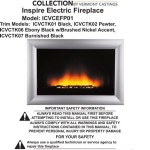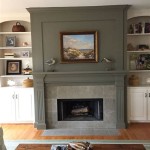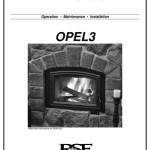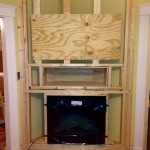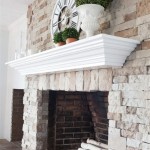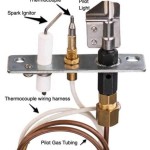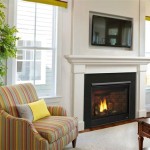Understanding Gas Pipe Options for Your Fireplace
A gas fireplace offers a convenient and aesthetically pleasing alternative to traditional wood-burning fireplaces. A crucial component of any gas fireplace installation is the gas pipe, which reliably and safely delivers natural gas or propane to fuel the flames. Selecting the appropriate type of gas pipe and ensuring proper installation are paramount for both safety and optimal performance. This article provides a comprehensive overview of different gas pipe options and essential considerations for a gas fireplace installation.
The type of gas pipe required for a fireplace depends on several factors, including the type of gas being used (natural gas or propane), the distance from the gas meter to the fireplace, the specific requirements of the fireplace appliance, and local building codes. It is crucial to consult with a qualified and licensed professional to determine the correct pipe size and material for a given installation. Incorrect sizing or improper installation can lead to inadequate gas flow, creating a hazardous situation and affecting the fireplace's functionality.
Different Types of Gas Pipe Materials
Several materials are commonly used for gas piping in residential applications, each with its own set of advantages and disadvantages. Understanding these differences is essential for making informed decisions regarding your fireplace installation.
Black Iron Pipe: This is a traditional and robust option for gas lines. Black iron pipe is known for its durability and resistance to physical damage. However, it is prone to corrosion, especially in damp environments. When using black iron pipe, all connections must be threaded and sealed with a gas-rated pipe joint compound to prevent leaks. Black iron pipe is typically used for larger diameter gas lines and is often preferred for main gas supply lines. It is generally approved for both indoor and outdoor use, although proper protection against the elements is recommended for outdoor installations.
Galvanized Steel Pipe: While seemingly similar to black iron pipe, galvanized steel pipe is not recommended for gas lines. The zinc coating on the pipe can react with natural gas, potentially creating a flaky residue that can clog pipes and appliances over time. The use of galvanized steel pipe for gas lines is often prohibited by local building codes. Therefore, it should be avoided in gas fireplace installations.
Copper Tubing: Copper tubing, specifically Type L or Type K copper, is sometimes used for gas lines, particularly for smaller diameter runs. Copper is resistant to corrosion and is relatively easy to work with. However, it requires specialized soldering or brazing techniques to ensure leak-proof connections. Type L copper is generally used for interior gas lines, while Type K is thicker and suitable for underground installations where permitted. Direct burial of copper gas lines must adhere to strict regulations to prevent corrosion and damage.
Corrugated Stainless Steel Tubing (CSST): CSST is a flexible, lightweight option that is becoming increasingly popular for gas line installations. It consists of a corrugated stainless steel tube covered with a yellow or black polyethylene jacket. CSST is easier to install than rigid pipe because it can be bent around obstacles, reducing the number of fittings required. However, CSST is susceptible to damage from lightning strikes, so it must be properly bonded to the electrical grounding system of the building. Furthermore, not all jurisdictions permit CSST, so confirming code compliance is critical.
Polyethylene (PE) Pipe: PE pipe is primarily used for underground gas lines, particularly for propane systems. It is flexible, durable, and resistant to corrosion. PE pipe requires specialized fittings and installation techniques, including heat fusion or mechanical joints. The use of PE pipe is often limited to underground applications due to its sensitivity to ultraviolet (UV) radiation and potential for damage from physical impact above ground.
Sizing and Installation Considerations
Proper sizing of the gas pipe is crucial for ensuring adequate gas flow to the fireplace. Undersized pipes can restrict gas flow, leading to a weak flame and inefficient heating. Oversized pipes, while less problematic, can increase material costs. The correct pipe size is determined by the BTU (British Thermal Unit) input rating of the fireplace, the length of the gas line, and the specific gravity of the gas (natural gas or propane). Gas sizing charts, available in plumbing and gas fitting codes, provide guidelines for selecting the appropriate pipe size based on these factors.
Installation of gas piping must comply with all applicable local and national codes. These codes address various aspects of the installation, including pipe sizing, material requirements, jointing methods, pressure testing, and venting. It is imperative to hire a licensed and qualified gas fitter to perform the installation to ensure compliance with these codes and to guarantee the safety of the installation. Improper installation can result in gas leaks, explosions, and carbon monoxide poisoning.
Prior to commissioning the gas fireplace, the gas line must be pressure tested to verify the integrity of the system. The pressure test typically involves pressurizing the gas line with air or nitrogen and monitoring the pressure for a specified period. Any drop in pressure indicates a leak, which must be located and repaired before the fireplace is put into service. Pressure testing is a critical safety measure that should never be skipped.
Safety and Maintenance
Safety is the utmost priority when dealing with gas appliances. Regular inspection and maintenance of the gas piping system are essential for preventing leaks and ensuring safe operation. Homeowners should be aware of the signs of a gas leak, such as a rotten egg smell, hissing sounds near gas pipes, and dead vegetation near buried gas lines. If a gas leak is suspected, immediately evacuate the building, do not use any electrical devices, and contact the gas company or fire department from a safe location.
Periodic inspection of gas pipes for signs of corrosion, damage, or loose connections is recommended. Any damaged or corroded pipes should be replaced immediately by a qualified gas fitter. Proper ventilation of the fireplace is also crucial to prevent the buildup of carbon monoxide, a colorless, odorless, and deadly gas. Ensure that the fireplace venting system is properly installed and maintained.
Installing a carbon monoxide detector near the fireplace is a vital safety precaution. Carbon monoxide detectors provide an early warning of elevated carbon monoxide levels, allowing occupants to evacuate the building before exposure becomes dangerous. Regularly test and replace the batteries in carbon monoxide detectors to ensure they are functioning properly. By following these safety guidelines and maintaining the gas piping system, homeowners can enjoy the convenience and comfort of a gas fireplace while minimizing the risks associated with gas appliances.

Lp Gas Line Clearance Plumbing Inspections Internachi Forum

Log Lighters Gas Starter Pipes Steel Cast Iron

Remove A Gas Fireplace Merrypad

Flexible Appliance Connector In Fireplace Plumbing Inspections Internachi Forum

Fireplace Gas Line Installation In Whittier

Custom Gas Pipes And Fireplace Burners Diamond Fire Glass

Some Questions Help With My B Vent Gas Log Fireplace Doityourself Com Community Forums
Hide Gas Pipe For Fireplace Diynot Forums

Fireplace With Old Gas Line Floor Heating Convert Installed House Remodeling Decorating Construction Energy Use Kitchen Bathroom Bedroom Building Rooms City Data Forum
Remove Gas Fireplace Vent Pipe How Do I Hearth Com Forums Home


